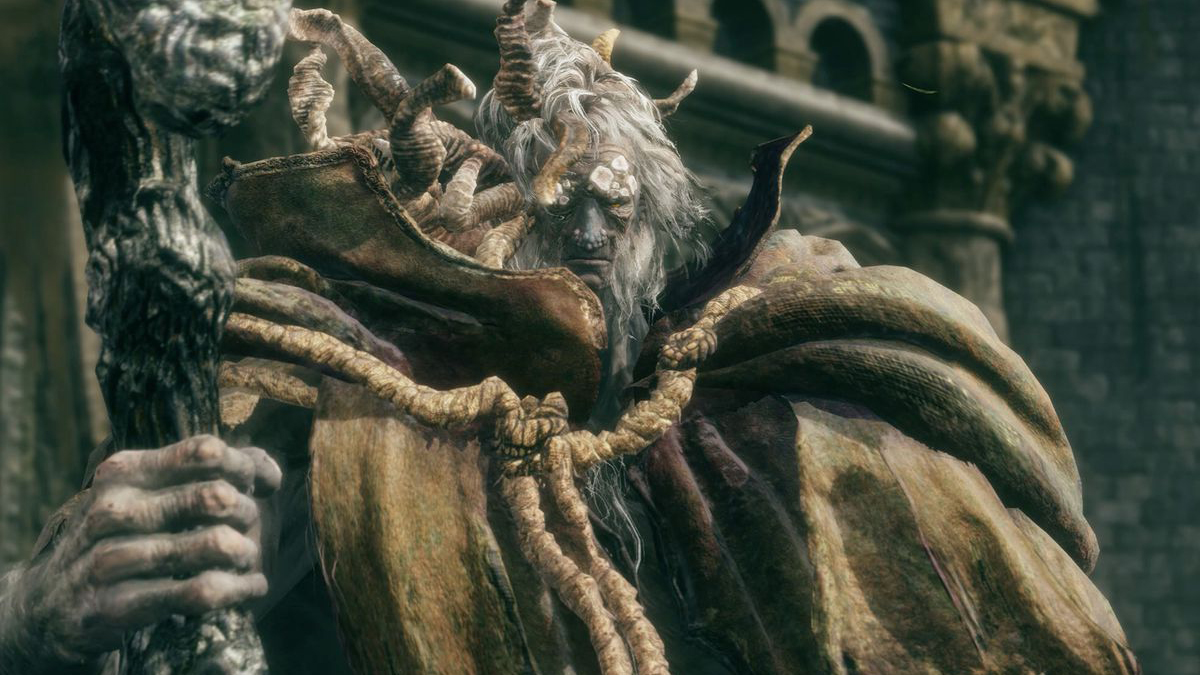The Elden Ring Poise stat is another one of the game’s underexplained mechanics. While there have been many iterations of similar systems in previous Souls games, this stat holds a special place in the community’s heart. It’s also a permanent source of great suffering. Whenever the mechanic exists in a Soulsborne game, it has the bad habit of being overhauled half a dozen times. Players must test and retest its effects to optimize their builds once again. As of patch 1.1.0, it’s once again received the dreaded overhaul. Here’s the Elden Ring Poise stat explained.
Elden Ring Poise Stat Explained (1.1.0)
Poise in Elden Ring boils down to a hidden armor value that determines how easy or hard it is for you to be staggered by enemy attacks. In most conversations, the stat is considered the value you can see in the status menu below the Equip Load stat. It works like this:
- At low values, even a single swipe of a dagger will cause your character will recoil momentarily. You won’t be able to attack or dodge.
- At high values, you can tank lighter weapon attacks (think Daggers and shorter weapons). However, there’s no value that will let you take a hit from a Colossal Sword. This isn’t the first Dark Souls.
How Poise Works in Elden Ring

You’ll find the stat value beneath Equip Load in the middle part of the Status screen. Heavier armor tends to provide more of the stat. The lower a piece of armor is on the default sort of the menu, the higher the value will be and the more the item will weigh. You can also equip the Bull-Goat’s Talisman for an effective 33% increase. This makes values well over 100 possible with the heaviest gear equipped.
Related: What Does Dexterity Do inn Elden Ring?
As for the mechanic’s function, Poise in Elden Ring works basically like the original Dark Souls‘ version. However, the values are elevated. Every hit you take from any weapon deals a Poise damage value that’s immediately subtracted from your base stat. When one or more attacks exceeds your “Poise HP,” you’ll stagger. For a more detailed rundown, we have a list of all the major Elden Ring breakpoints in this guide.
Elden Ring Poise Breakpoints Explained
To make things even more complicated, Poise has breakpoints. These are specific values you must meet if you want to actually withstand the stagger for a weapon. Until you meet or exceed a particular breakpoint, weapons or attack types that deal Poise damage higher than what you have equipped will always stagger you. Past those breakpoints, you’ll be better off. Though, your choices for armor and Talismans will decrease significantly.
This is normally where I’d list off the breakpoints you want. Problem is, patch 1.1.0 is so recent that it’s still unclear exactly what you need to equip to tank through an offhand Estoc. I’ve heard anecdotal reports that it’s as much as 109 or so. I’ll update this guide when more thorough testing is done.
There are, however, certain weapons that have no discernable breakpoint. Colossal Weapons and Colossal Swords probably have a breakpoint or several, but it’s so high as to be essentially nonexistent. In short, you’ll never be able to take a hit from a Greatsword or other Colossal and not react to it. You can still roll through them without effect, of course. While status effects like Bleed and Frostbite are outside the mechanic and will almost always stagger you, you can roll through these, as well.
Hyper Armor: Active Poise Explained
In casual conversation, Elden Ring Poise is a singular mechanic. For the dedicated, it exists in two states: active and passive. Passive is what we’ve talked about above. A flat value that’s always active and requires no player input to use. Active Poise, however, is another beast entirely. Referred to as both Active and “hyper armor” by the community, this secondary mechanic requires precise timing and a deeper understanding of Elden Ring’s mechanics to use properly.
- Hyper armor, like Poise, prevents stagger, but only for a set number of frames during the attack animation of heavier weapons or specific Ashes of War. In other words, during a particular, mid-swing interval with weapons like the Clawmore or Greatsword, or during an Ash of War like Stamp (uppercut), no attack will stop the swing.
Patch 1.10 appears to have reorganized how the game prioritizes between Active and Passive Poise, vastly increasing the passive damage most weapons do while making the use of hyper armor the preferred method. Depending on how much you’ve invested in Elden Ring‘s mechanics, this is either a good or a bad thing.
For more casual players, it might be a detriment. More attacks will cause stagger, and even the heaviest armor doesn’t offer as much relief. For more serious players, it’s probably an improvement. The priority shift means you have to apply additional skill to get the most out of Poise rather than slapping a number on it and calling it a day.
And that’s Elden Ring Poise explained. It’s neither the simplest nor the easiest to parse mechanic ever put in a game, but knowing how it works at even a base level is a good first step to becoming a more effective and experienced player. For more help with FromSoftware’s latest entry in the venerable Soulsborne series of games, check out our guides on the 11 best Ashes of War, how to farm runes, and more in our Elden Ring guides hub.







Published: Jul 29, 2023 10:49 am